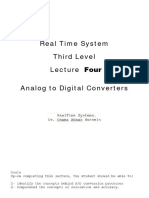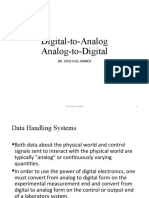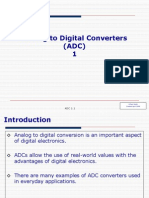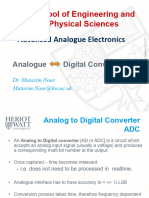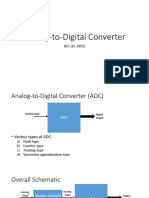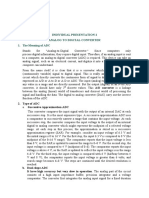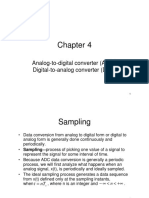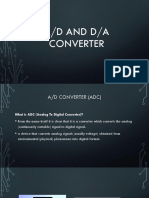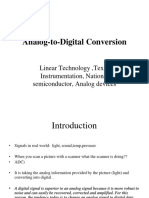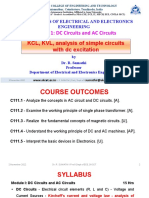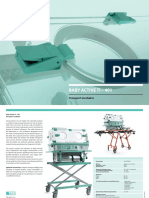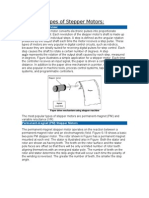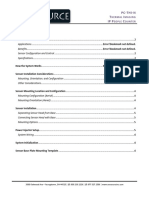0% found this document useful (0 votes)
144 views19 pagesAnalog to Digital Conversion Guide
The document summarizes different types of analog to digital converters (ADCs) including flash ADCs, sigma-delta ADCs, dual slope converters, and successive approximation ADCs. It explains the fundamental concepts of sampling, quantizing, and encoding that all ADCs use to convert continuous analog signals to discrete digital outputs. For each type of ADC, it provides a brief description of how it works along with its advantages and disadvantages in terms of speed, resolution, cost, and other factors. It concludes by comparing the different ADC types side by side in terms of resolution capabilities and relative speed and cost tradeoffs.
Uploaded by
Fabian RendraCopyright
© © All Rights Reserved
We take content rights seriously. If you suspect this is your content, claim it here.
Available Formats
Download as PDF, TXT or read online on Scribd
0% found this document useful (0 votes)
144 views19 pagesAnalog to Digital Conversion Guide
The document summarizes different types of analog to digital converters (ADCs) including flash ADCs, sigma-delta ADCs, dual slope converters, and successive approximation ADCs. It explains the fundamental concepts of sampling, quantizing, and encoding that all ADCs use to convert continuous analog signals to discrete digital outputs. For each type of ADC, it provides a brief description of how it works along with its advantages and disadvantages in terms of speed, resolution, cost, and other factors. It concludes by comparing the different ADC types side by side in terms of resolution capabilities and relative speed and cost tradeoffs.
Uploaded by
Fabian RendraCopyright
© © All Rights Reserved
We take content rights seriously. If you suspect this is your content, claim it here.
Available Formats
Download as PDF, TXT or read online on Scribd
/ 19
